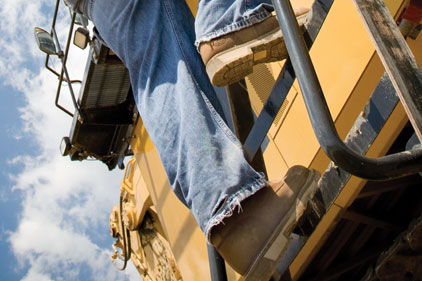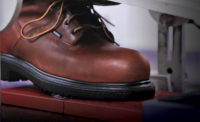A designer’s insights on safety footwear

Focus on the end user
With footwear, it’s easy to get carried away with what you think looks best, new materials that seem really innovative or colors that are trendy. Instead of always looking for something new and exciting, it’s more important to focus on how the end product will actually be used and what workers expect from it.
Form follows function when it comes to safety footwear design. That cool new material might not perform like you need it to in a tough work environment or that upper pattern you think looks so great may not meet the demands of a specific workplace. The balance of form and function is the toughest part of safety footwear design and development.
To get a true understanding of safety footwear, walk a day in the boots of the worker. Hit the construction site, work the factory floor and pull together focus groups to find out what matters to the individuals who wear these shoes and boots. This is the best way to ensure the design is always focused on the end user.
An emotional connection
What kid didn’t dream about the brand new pair of tennis shoes he would get at the beginning of every school year? Our culture has become very comfort-driven and athletic-footwear oriented. The newest generation of workers grew up in athletic shoes. When choosing a light industrial style or a heavier boot, workers look for elements that remind them of their favorite shoes. This could include something as simple as a brightly colored spacer mesh in the collar lining or a colorful accent to the lace or outsole. These types of design elements make the worker remember their favorite pair of sneakers and make a design more appealing, even if it is for a new pair of work shoes.
Safety features can be cool
The steel toe and non-slip outsoles of the past have always been a staple of safety footwear, but new technologies can be presented in a fun, innovative way as well. Adding highly visual reflective material has been well received by consumers in recent years, and adding carbon fiber texture to a visual upper component helps highlight the technology in a fun way. Aspects of a shoe that make it safer, more comfortable and perform better can be visually communicated through the overall design and add to the appeal of the product. Well-designed footwear incorporates safety features in a functional product that workers are excited to wear.
Leather, leather and leather
There’s an old saying in real estate, “It’s all about location, location, location.” In footwear, it’s all about the leather. Even the most beautiful upper pattern may not be successful if it is not the right leather. For work boots, an oily full-grain that looks like it has already been worn in a bit works nicely, but some styles need something a little less rugged or with more shine. The leather choice of any footwear comes down to the first criteria mentioned: what works well and looks best for the end user?
The Devil is in the details
Take a look at your shoes. Can you name all the parts that make these a functioning product? Not all shoe components are created equal. Developers of quality safety footwear are concerned with the little details. What is the optimal lug depth? What alloy makes up that hardware? How many flexes can this leather withstand? What is the best combination of abrasion and comfort for a given lining? These are just some of the concerns on top of the ASTM, CE and CSA written standards manufacturers must meet.
When you purchase something as important as safety footwear, you need to be confident that the team that brought the foot protection to you did all they could to make them the not only perform, but also be comfortable, safe and visually appealing.
Looking for a reprint of this article?
From high-res PDFs to custom plaques, order your copy today!





